
JACOBITE BY NAME
Unveiling the Legacy of a Rebellion
Welcome to the Jacobite by Name campaign, a journey into the heart of a rebellion that continues to stir hearts and ignite imaginations. Here, you'll delve into the rich tapestry of Jacobite history, from uprising to enduring legacy.
Join us on this captivating journey as we explore the Jacobite legacy!
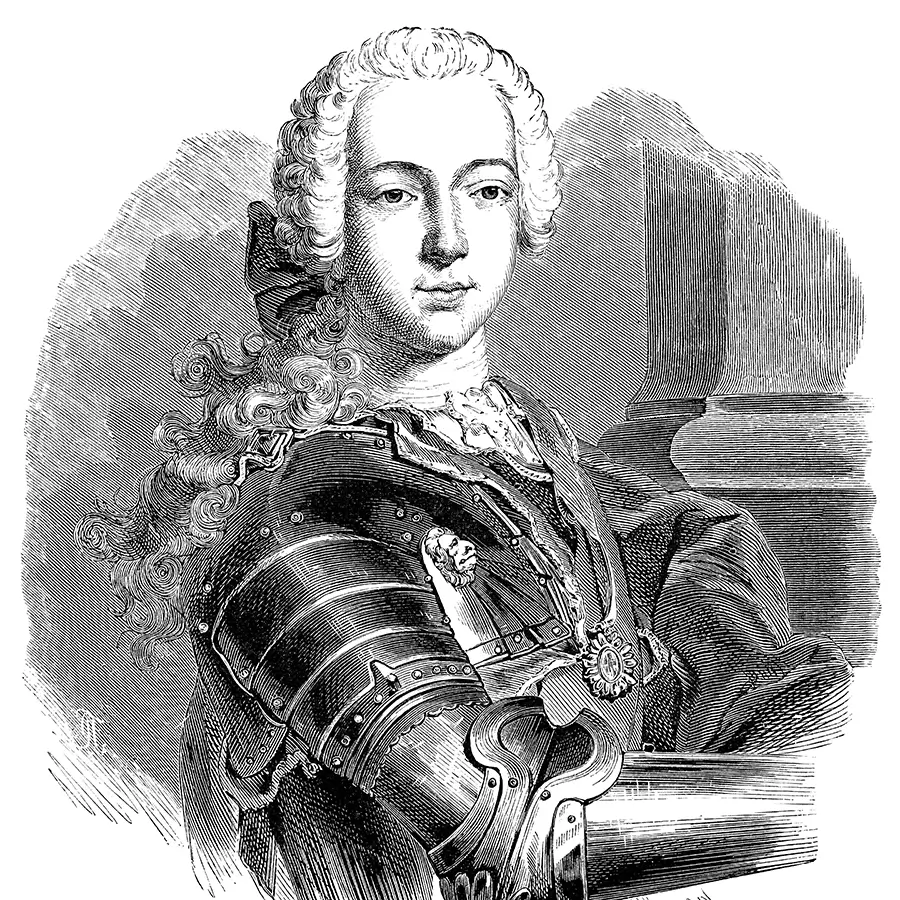
Portrait of Bonnie Prince Charlie, son and heir of King James II, the exiled King.
WHO WERE THE JACOBITES?
The Jacobites were a passionate and multifaceted group who rallied behind the deposed Stuart line of monarchs. Following the Glorious Revolution of 1688, which saw the Protestant (and Dutch) William of Orange ascend the British throne instead of the Catholic James II of the Stuart line. The Jacobites believed the Stuarts were the rightful heirs and this conviction ignited a series of uprisings, particularly in Scotland throughout the 18th century, in a fervent attempt to restore the Stuarts to power. Their cause transcended mere politics, becoming a powerful symbol of defiance, religious conviction, and a yearning for a perceived golden age of Scottish identity.
UNVEILING THE PAST: HISTORY OF THE JACOBITES
The Jacobite uprising was a complex and multifaceted saga fueled by a passionate yearning for a bygone era. At its core lay unwavering loyalty to the exiled Stuart dynasty, whom the Jacobites believed were the rightful heirs to the British throne. The Glorious Revolution of 1688, which saw the Protestant William of Orange ascend the throne in place of the Catholic James II, was considered unlawful. This conviction was further bolstered by the concept of the divine right of kings, a belief that monarchs derived their power directly from God, as well as the Anglican church's belief that the King is the sole representative of God on Earth (not the Pope). Catholics, particularly in Scotland and Ireland, saw the Protestant monarchs as a threat to their religious freedoms, further solidifying their support for the Stuarts.
Beyond religious beliefs, the Jacobite cause resonated deeply with many Highland clans in Scotland. They felt increasingly marginalised by the growing power of the Lowlands and the British government. The Stuarts represented a return to a time of greater autonomy for the Highlands, a respect for their Gaelic culture and traditions, and a loosening of the grip of the Lowland elite. Clan rivalries also played a part, with some clans siding with the Jacobites to oppose their historical rivals who supported the crown.
The 1707 Act of Union, which merged Scotland and England into a single kingdom, further fueled the flames of discontent. This unpopular act was seen by many Scots, particularly in the Highlands, as an erosion of Scottish sovereignty and a threat to their way of life. The Jacobites promised to dismantle the Union and restore Scotland's independence, offering a glimmer of hope for those yearning to return to a more self-governing past.
However, it's important to remember that not all Scotland supported the Jacobite cause. Many Lowland Scots and some Highland clans remained loyal to the crown. The Jacobite movement, despite its initial successes, was ultimately unsuccessful. The exhilarating victories at Prestonpans and Falkirk, where they employed unconventional tactics and superior swordsmanship, were tragically overshadowed by the devastating defeat at the Battle of Culloden in 1746. The larger and better-equipped British army inflicted a crushing blow on the Jacobite forces, marking a turning point in the rebellion.
The Jacobite story is a captivating saga of passionate convictions, divided loyalties, and a yearning for a lost past. It reminds us of the complex interplay of ideology, religion, and cultural identity that shaped Scottish history.

The Tartan:
A Woven Journey Through Scottish History
Tartan, with its vibrant patterns and rich history, has become synonymous with Scotland. But this iconic symbol started far from the fashion runways and tourist shops – it began as a practical garment deeply woven into the fabric of Highland life.
From Necessity to Identity:
The Early Days of Tartan
Highland life was a rugged affair, and clothing reflected this harsh reality. Tartan, derived from the Gaelic term "trews," referred to a cloth woven from readily available materials like sheep's wool. These early tartans were often undyed, resulting in natural shades of brown, green, and grey that blended seamlessly with the Highland landscape. While some historians believe distinct patterns may have emerged to identify different clans, definitive evidence for this practice is limited.
A Glimpse into the Past:
Tartan's Enduring Legacy
The Glen Affric Tartan is hailed as the oldest surviving tartan fragment, archaeological research suggests it dates back to somewhere between 1500 and 1600 AD, a period encompassing the reigns of James V, Mary Queen of Scots, and James VI/I. This discovery is a fantastic revelation, offering a tangible link to Scotland's textile history.
It's important to note, however, that while the tartan was found in an area historically controlled by Clan Chisholm, we can't definitively attribute it to them. The lack of specific context surrounding the find makes it difficult to construct a precise historical narrative. Nevertheless, the intricate design of the Glen Affric Tartan speaks volumes about the skill and artistry of early Highland weavers, leaving us with a captivating glimpse into this era.
Further enriching our understanding of early Scottish textiles is a remarkable find unearthed near Falkirk. This fragment, dating back to the 3rd century AD, predates the Glen Affric Tartan by over a thousand years! While not a true tartan in the strictest sense, it offers a fascinating glimpse into even earlier weaving techniques and is theorised to be a predecessor to Tartan. Unlike the Glen Affric Tartan's intricate design, the Falkirk fragment features a simpler check pattern woven with undyed yarns. This discovery suggests a long and rich tradition of textile production in Scotland, with both practical and potentially more elaborate forms existing well before the development of the clan system.
Rise and Fall, and Rise Again:
Tartan's Tumultuous Journey
The aftermath of the Jacobite uprising in 1746 saw a deliberate attempt to suppress Highland culture. The Act of Proscription outlawed the wearing of tartan, kilt, and the playing of bagpipes. This act, however, had the unintended consequence of solidifying the tartan as a potent symbol of defiance and Highland identity. After the act was repealed in the late 18th century, the wearing of tartan experienced a resurgence. The 19th century saw a surge in romanticism surrounding Scotland, and tartan became a symbol of national pride. This period also witnessed the standardisation of tartan patterns and the invention of the modern kilt, solidifying the image of the tartan-clad Highlander that continues to capture imaginations today.
The story of tartan is a testament to its adaptability. From a practical garment to a symbol of rebellion and, ultimately, a national emblem, tartan's journey reflects the rich tapestry of Scottish history.

GET THE OUTLANDER INSPIRED LOOK
Headline
The Basket-Hilt Broadsword:
A Legacy Forged in Steel
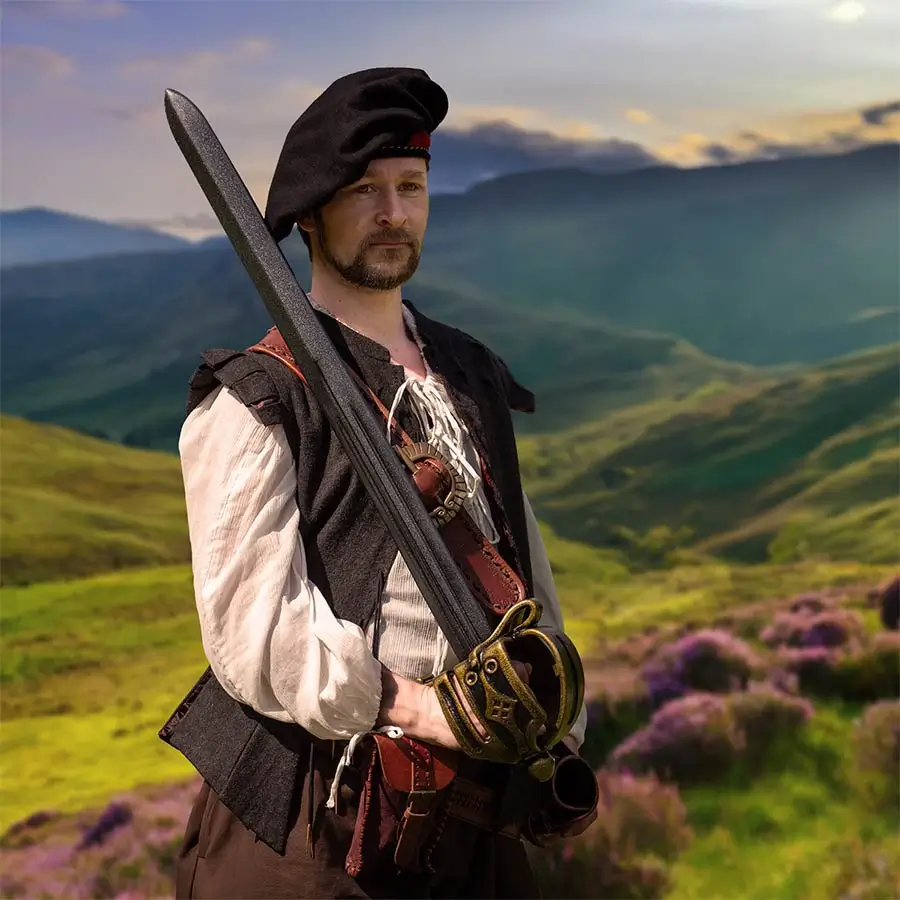
The clash of steel, the roar of the charge – the basket-hilt broadsword was more than just a weapon; it symbolised Highland fury on the battlefield. Emerging in the 16th century, this fearsome blade rose to prominence in Scotland, particularly during the Jacobite rebellions. Its defining feature, the basket hilt – a woven metal guard – offered unparalleled protection for the hand compared to the traditional crossguard. This innovation allowed for a more aggressive fighting style, perfect for the close-quarter brawls that characterised Highland warfare.
Scottish swordsmiths, especially those from centres like Dundee, honed their craft for generations, imbuing these blades with lethality and beauty. The basket-hilt broadsword wasn't just a Scottish phenomenon, however. Its effectiveness and adaptability saw armies across Europe use it throughout the 16th, 17th, and 18th centuries. From the brutal clashes of the Thirty Years' War to the elegant fencing halls of Renaissance Italy, the basket-hilt broadsword carved its place in European military history.
Immerse Yourself in the Jacobite Legacy
For those captivated by the drama and rebellion of 17th-century Scotland, the Jacobite legacy continues to resonate today. Here are a few ways to delve deeper:
Live the History: Jacobite! LARP
Step back in time with "Jacobite!" a historical live-action role-playing game set in 1720s Scotland. Immerse yourself in the world of the Highland Clans, taking on the role of lairds, ladies, household staff, or factors. This game focuses on the Clan Chattan and events inspired by real history, allowing players to influence the narrative and experience the political intrigue and personal struggles of the Jacobite cause.
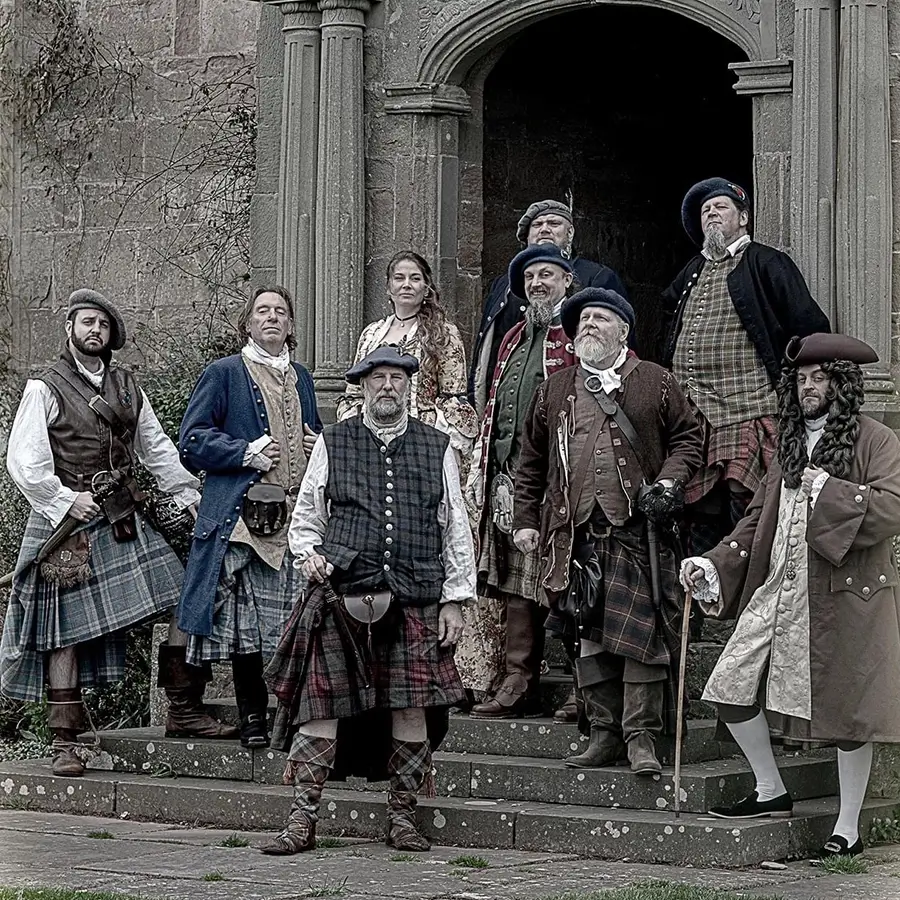
Picture by Roy Smallpage. Event: Jacobite! IV - The Wedding (LARP)
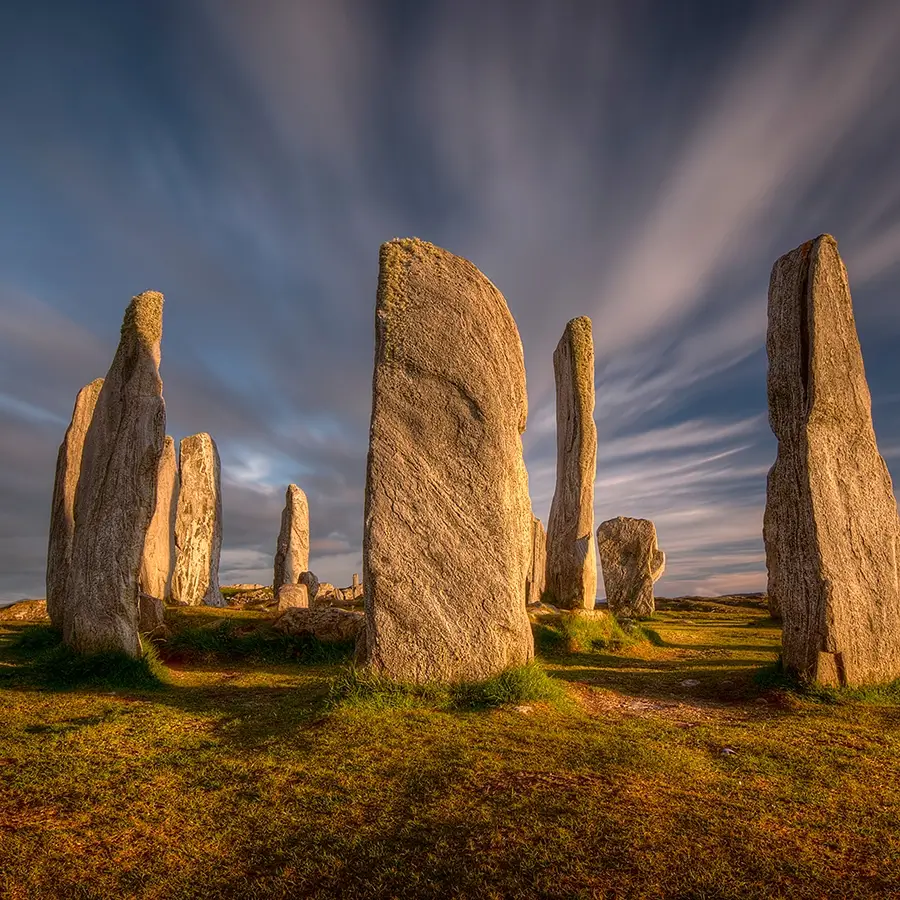
Watch the Romance: Outlander
For a captivating blend of history and fiction, delve into the world of "Outlander," a popular television show. Follow Claire Randall, a 20th-century nurse who mysteriously travels back to 1743 Scotland and finds herself entangled in the Jacobite rebellion. The series explores themes of love, loyalty, and survival against the backdrop of this tumultuous period.
Hike Through History: The Jacobite Trail
Lace up your walking boots and embark on the Jacobite Trail in Scotland. This self-guided route winds through historic locations pivotal in the Jacobite uprisings. As you explore, learn about the loyalty, loss, and perseverance that defined this era. The Jacobite Trail website provides valuable resources for your journey.
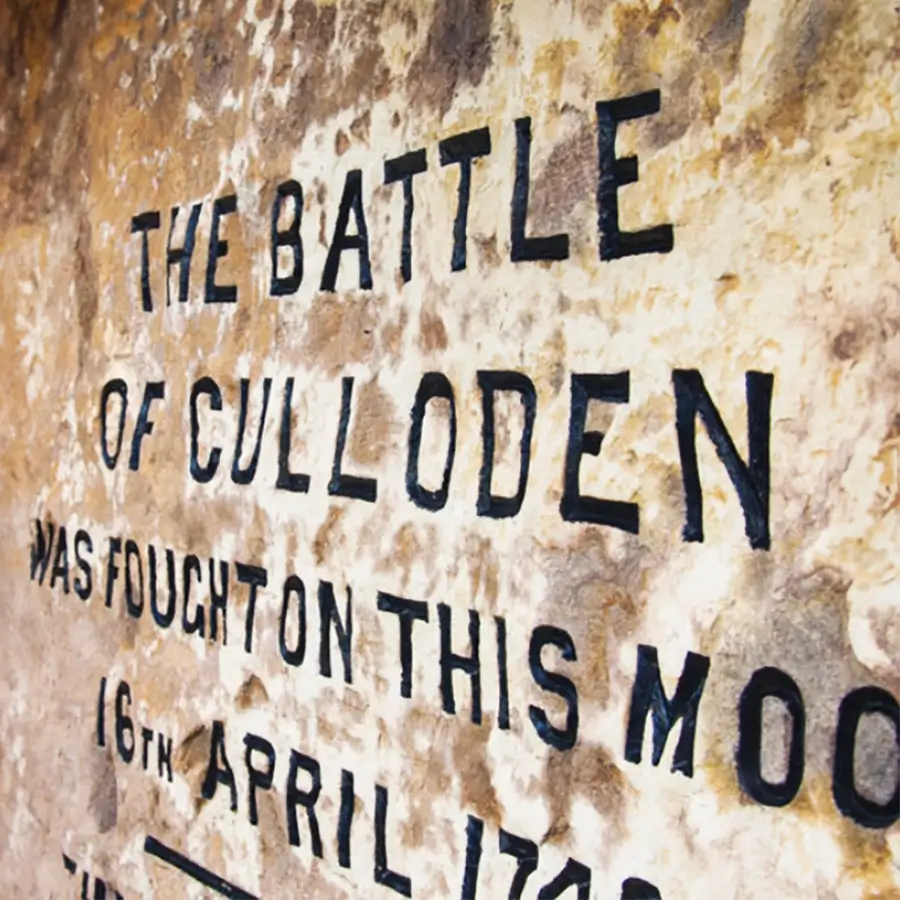
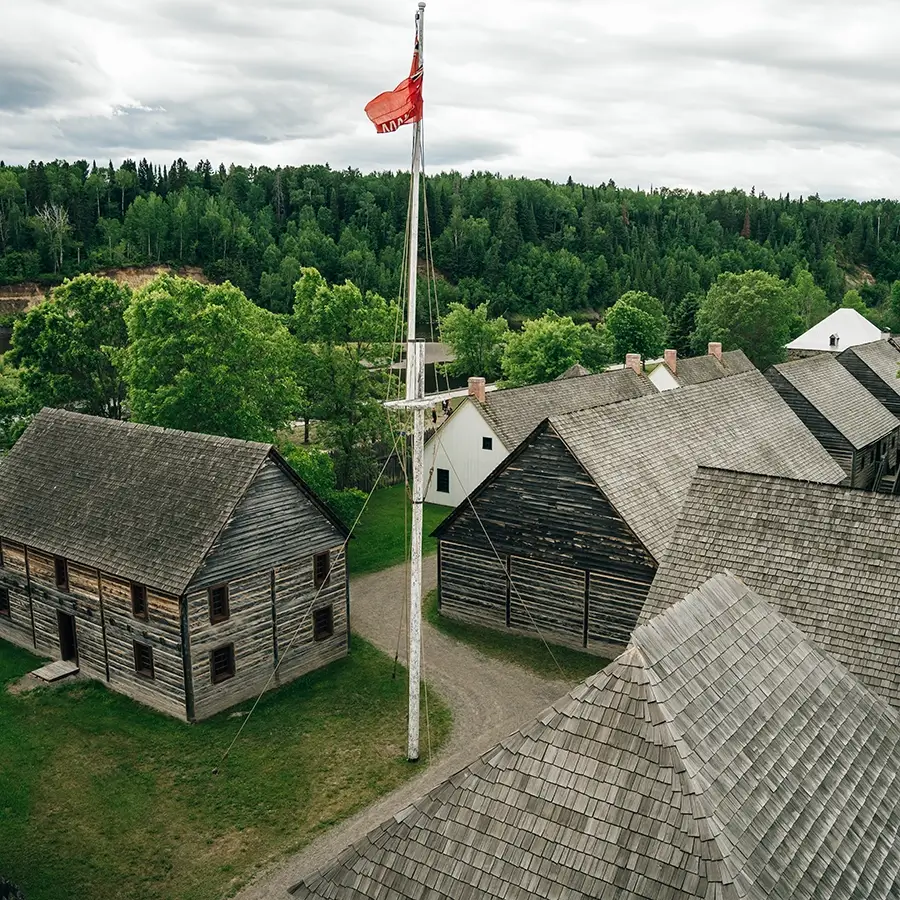
Beyond Scotland: Fort William Historical Park (Canada)
The Jacobite story extends beyond Scotland. Fort William Historical Park in Ontario, Canada, also hosts events that pay homage to the era. Witness historical reenactments of the Battle of Culloden and participate in other 18th-century-themed activities.
Thank you for staying with us all the way down here, hopefully learning something new about the Jacobites!
As a little thank you, for reading along,
We offer a 15% discount on all swords with the exclusive promo code
– TheBonniePrince –
lasting until 01/07/24, 23:59 CEST.

 Denmark
Denmark
 United States
United States
 United Kingdom
United Kingdom
 Germany
Germany
 Sweden
Sweden
 Norway
Norway
 Åland
Åland
 Australia
Australia
 Austria
Austria
 Belgium
Belgium
 Brazil
Brazil
 Bulgaria
Bulgaria
 Canada
Canada
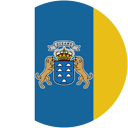 Canary Islands
Canary Islands
 Chile
Chile
 China
China
 Croatia
Croatia
 Cyprus
Cyprus
 Czech Republic
Czech Republic
 Estonia
Estonia
 Faroe Islands
Faroe Islands
 Finland
Finland
 France
France
 Greece
Greece
 Greenland
Greenland
 Hungary
Hungary
 Iceland
Iceland
 India
India
 Indonesia
Indonesia
 Ireland
Ireland
 Israel
Israel
 Italy
Italy
 Japan
Japan
 Kuwait
Kuwait
 Latvia
Latvia
 Lithuania
Lithuania
 Luxembourg
Luxembourg
 Malaysia
Malaysia
 Malta
Malta
 Mexico
Mexico
 Montenegro
Montenegro
 Nepal
Nepal
 Netherlands
Netherlands
 New Zealand
New Zealand
 Pakistan
Pakistan
 Peru
Peru
 Poland
Poland
 Portugal
Portugal
 Georgia
Georgia
 Reunion
Reunion
 Romania
Romania
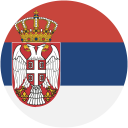 Serbia
Serbia
 Singapore
Singapore
 Slovakia
Slovakia
 Slovenia
Slovenia
 South Africa
South Africa
 South Korea
South Korea
 Spain
Spain
 Switzerland
Switzerland
 Taiwan
Taiwan
 Turkey
Turkey
 Ukraine
Ukraine
 Puerto Rico
Puerto Rico
 Honduras
Honduras
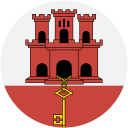 Gibraltar
Gibraltar











